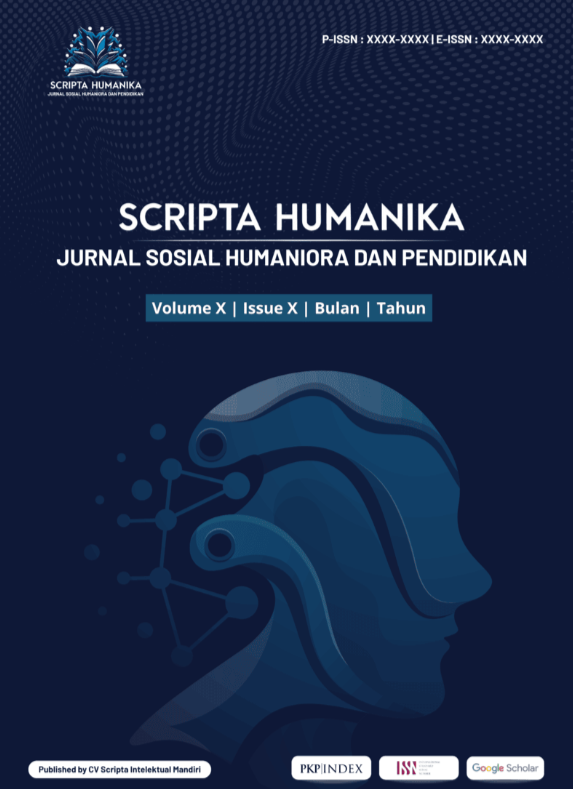Analysis of HOTS Question Creation to Develop Students' Higher-Order Thinking Skills in Physics Problem Solving
Abstract
Higher Order Thinking Skills (HOTs) are important skills in 21st century learning that include critical, creative, collaborative, and communicative thinking abilities. HOTs questions are needed to encourage students to engage in deep reasoning, rather than simply memorizing without understanding the concepts. By accustoming students to working on challenging questions, their potential can be developed optimally. This study aims to identify the causes of difficulties in creating HOTs questions in physics and to find appropriate solutions to address them. The research method was conducted in three stages: interviews with teachers, requesting teachers to create sample HOTs questions, and in-depth interviews regarding the question-creation process. The research results indicate that the main difficulty teachers face is finding question stimuli that can encourage students to analyze, evaluate, and create answers. Additionally, teachers are required to be creative so that the questions differ from existing ones. In conclusion, physics teachers face numerous challenges in creating HOTs questions. To address this, teachers must be able to distinguish between question levels of understanding, application, and reasoning so that questions can comprehensively assess students' abilities.
Downloads
References
Azis, A., & Nurasiah, N. (2024). Development of history problems based on higher order thinking skills (HOTS) using Anderson Krathwohl taxonomy. Riwayat: Educational Journal of History and Humanities, 7(1), 111–118. https://doi.org/10.24815/jr.v7i1.
Aziz, M., & Rawian, R. (2022, September). Modeling higher order thinking skills and metacognitive awareness in English reading comprehension among university learners. In Frontiers in Education (Vol. 7, p. 991015). Frontiers Media SA. https://doi.org/10.3389/feduc.2022.991015.
Aziz, T. A., & Kharis, S. A. A. (2021, May). Characteristics of problems for developing higher-order thinking skills in mathematics. In Journal of Physics: Conference Series (Vol. 1882, No. 1, p. 012074). IOP Publishing. https://doi.org/10.1088/1742-6596/1882/1/012074.
Basuki, I., & Hariyanto. (2014). Asesmen pembelajaran. Bandung: PT Remaja Rosdakarya.
Baswir, R., dkk. (2003). Definisi pendidikan. Jakarta: PT Raja Grafindo Persada.
Bloom, B. S., Engelhart, M. D., Furst, E. J., Hill, W. H., & Krathwohl, D. R. (1956). Taxonomy of educational objectives: The classification of educational goals, handbook I cognitive domain. New York: Longmans, Green and Co.
Brookhart, S. M. (2010). How to assess higher-order thinking skills in your classroom. Alexandria, VA: ASCD.
Bungin, B. (2003). Analisis data penelitian kualitatif: Pemahaman filosofis dan metodologis ke arah penguasaan model aplikasi. Jakarta: PT Raja Grafindo Persada.
Darling-Hammond, L., Schachner, A. C., Wojcikiewicz, S. K., & Flook, L. (2024). Educating teachers to enact the science of learning and development. Applied Developmental Science, 28(1), 1–21. https://doi.org/10.1080/10888691.2022.2031359.
Gie, T. L. (2000). Pengantar filsafat ilmu (Cet. V). Yogyakarta: Penerbit Liberty.
Gunawan, S. H., Dwianti, E., & Suryantono, G. (2023). Literacy assessment of English teachers: Need analysis for higher education contexts. Linguistics and Education, 3(2), 47–59. https://doi.org/10.1016/j.linged.2023.100055.
Herbert Druxes, G., Born, G., & Siemsen, F. (1986). Kompendium didaktik fisika (Terj. Soeparmo). Bandung: Remadja Karya CV.
Huberman, A. M., & Miles, M. B. (Eds.). (2002). The qualitative researcher's companion. Thousand Oaks, CA: Sage Publications.
Jansen, M., & Möller, J. (2022). Teachers’ knowledge and application of higher-order thinking in science classrooms. International Journal of Science Education, 44(6), 871–889. https://doi.org/10.1080/09500693.2022.2032812.
Kusuma, M. D., Rosidin, U., & Suyatna, A. (2017). The development of higher order thinking skill (HOTS) instrument assessment in physics study. IOSR Journal of Research & Method in Education, 7(1), 26–32. https://doi.org/10.9790/7388-0701022632.
Mainde, D., Mtonga, D. E., Sakala, E., Chola, D. K., Magasu, O., Chileshe, K. S., & Mpolomoka, D. L. (2022). Adapting Fadel’s four-dimensional education model in teaching and learning civic education in 21st century Zambia. Journal of Education and Practice, 13(33), 140–147. https://doi.org/10.7176/JEP/13-33-16.
Moleong, L. J. (2006). Metodologi penelitian kualitatif (Edisi revisi). Bandung: Remaja Rosda Karya.
Saputra, H. (2016). Pengembangan mutu pendidikan menuju era global: Penguatan mutu pembelajaran dengan penerapan HOTS (High Order Thinking Skills). Bandung: Smile’s Publishing.
Shah, N. F. A. Z., & Zakaria, Z. (2024). The integration of higher order thinking skills in science classrooms: Malaysian teachers’ perspectives and practice. International Journal of Academic Research in Progressive Education and Development, 13(1), 570–586. https://doi.org/10.6007/IJARPED/v13-i1/12345.
Soedomo Hadi, A. (2008). Pendidikan (Suatu pengantar). Surakarta: UNS Press.
Sugiyono. (2008). Metode penelitian bisnis: Pendekatan kuantitatif, kualitatif, dan R&D. Bandung: Alfabeta.
Wathawatthana, P., Hongsa, N., Phonchad, P., & Thambunrueang, T. (2025). Breaking the silence: The impact of the CLT method on grade 12 students' speaking skills. International Journal of Education and Literacy Studies, 13(2), 612–621. https://doi.org/10.7575/aiac.ijels.v.13n.2p.612.
Yildirim, G. (2021). Analysis of 2015–2018 life studies curricula objectives based on Marzano and Kendall taxonomy. Educational Policy Analysis and Strategic Research, 16(4), 90–109. https://doi.org/10.29329/epasr.2021.383.6.
Downloads
Published
Issue
Section
License
Copyright (c) 2025 Delvananta Givarin, Ellianawati Ellianawati (Penulis)

This work is licensed under a Creative Commons Attribution-NonCommercial-ShareAlike 4.0 International License.













